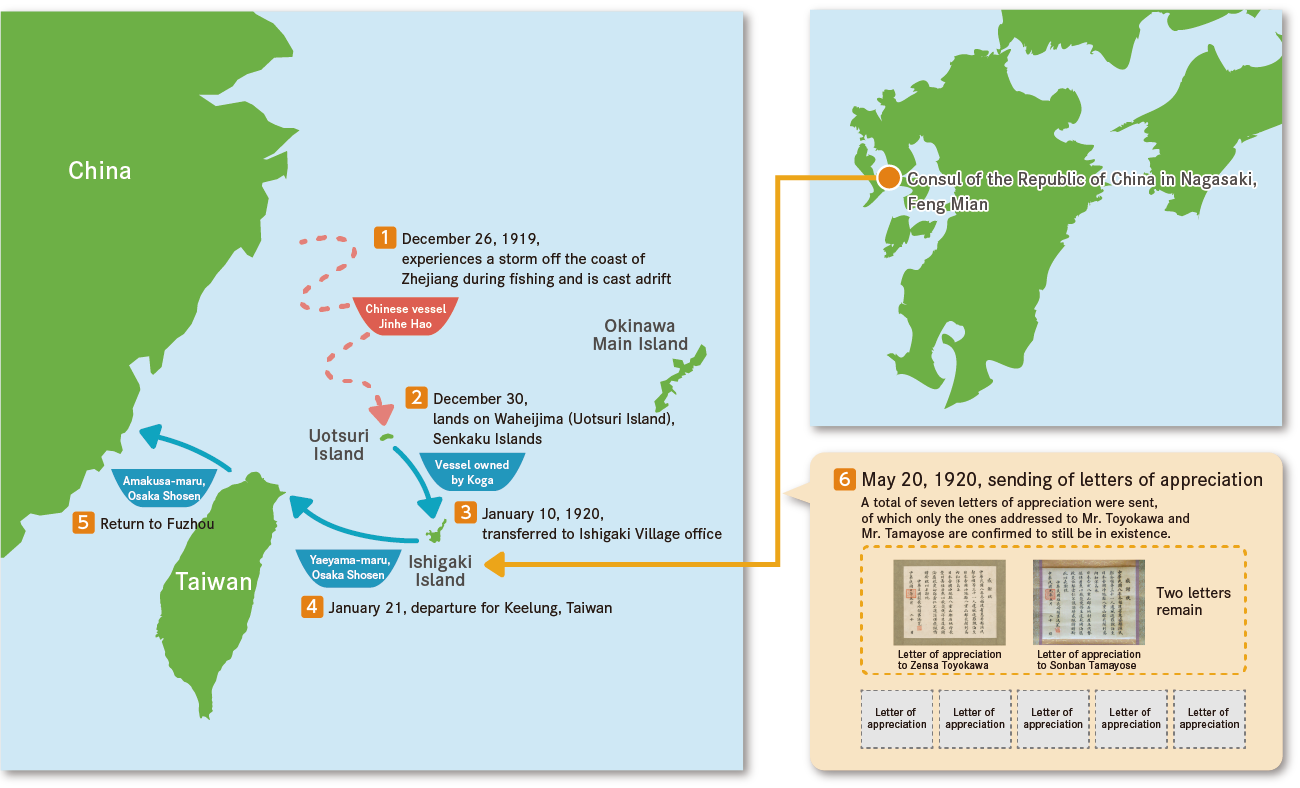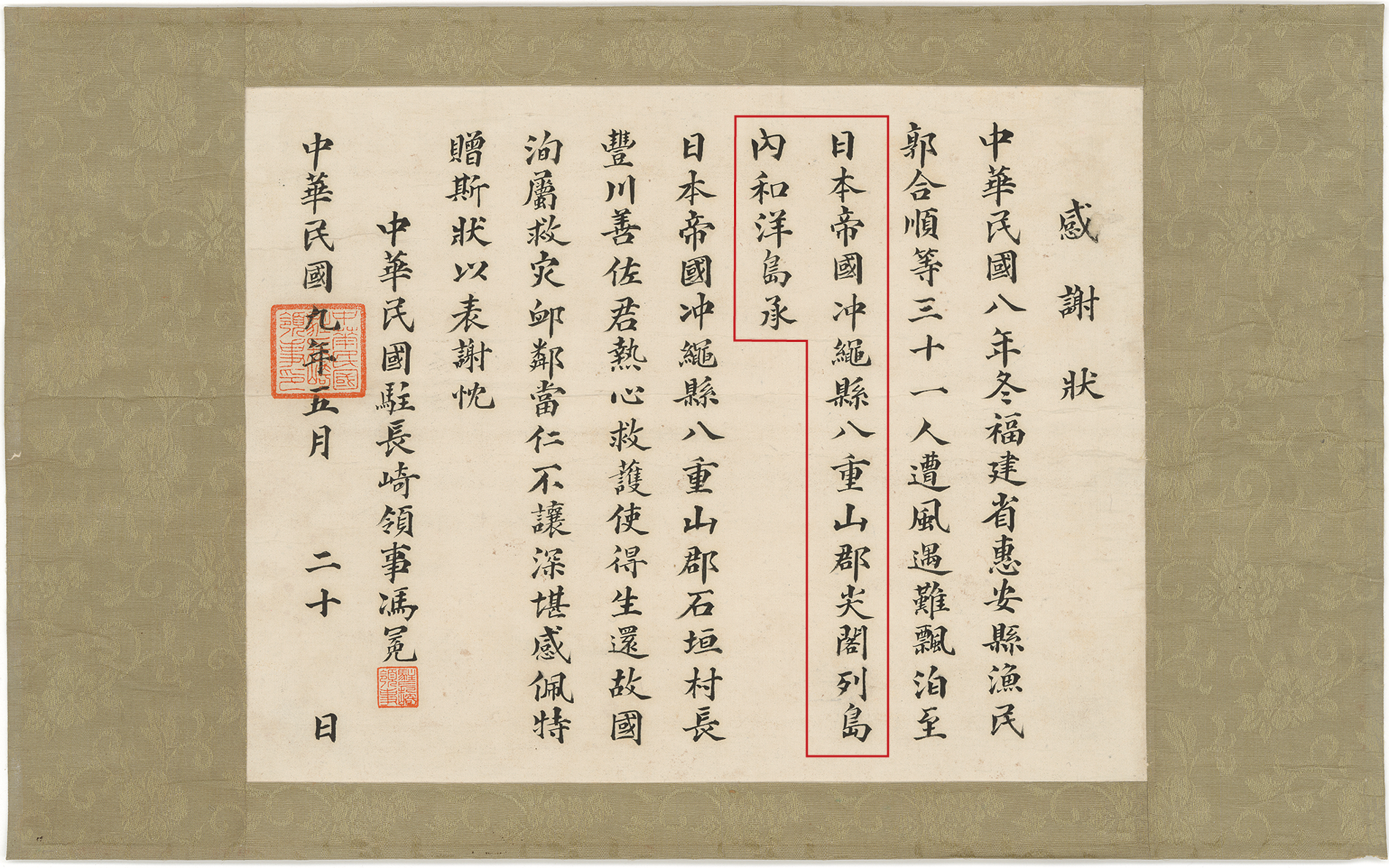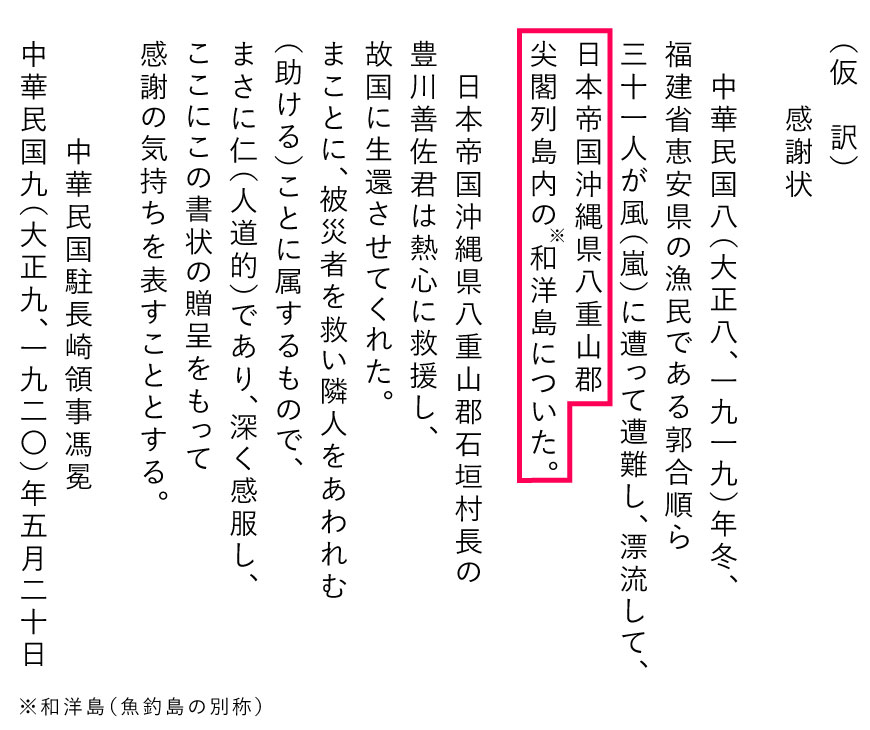The fishing vessel Jinhe Hao, carrying 31 fishermen including Guo Heshun from Baiji Village, Hui’an County, Fujian Province in China, was engaged in fishery activities near Zhejiang. On December 26, 1919, the same fishing vessel was caught in a storm, became unable to navigate, and began to drift. After drifting for five days, Guo and his companions used the small boat mounted on the ship to reach Wahei Island (another name for Uotsuri Island) of the Senkaku Islands in the evening of December 30. The fishing vessel that they had been sailing on, measuring 15.6 m by 5.4 m, was completely wrecked in the storm. They had exhausted their food supplies and were faced with the prospect of starvation.
Fortunately, Zenji Koga’s factory, which engaged in the production of dried bonito and other activities, was located on Wahei Island (Uotsuri Island), and more than 30 people were working in the factory. They rescued the 31 shipwrecked fishermen, including Guo, and shared with them the food supplies they had in storage. On January 10, 1920, after the weather had improved, Guo and the fishermen who had been staying on the island after their rescue were all sent to the Ishigaki Village Office on fishing vessels owned by Koga Shoten. Concerning the repatriation of the shipwrecked fishermen, after negotiations between Ishigaki Village Office and the Consul of the Republic of China in Nagasaki, the fishermen departed for Keelung, Taiwan on the Yaeyama Maru belonging to Osaka Shosen (Osaka Mercantile Steamship) on January 21. On January 25, they then set off from Keelung and returned to Fuzhou on Osaka Shosen’s Amakusa Maru via Xiamen.




